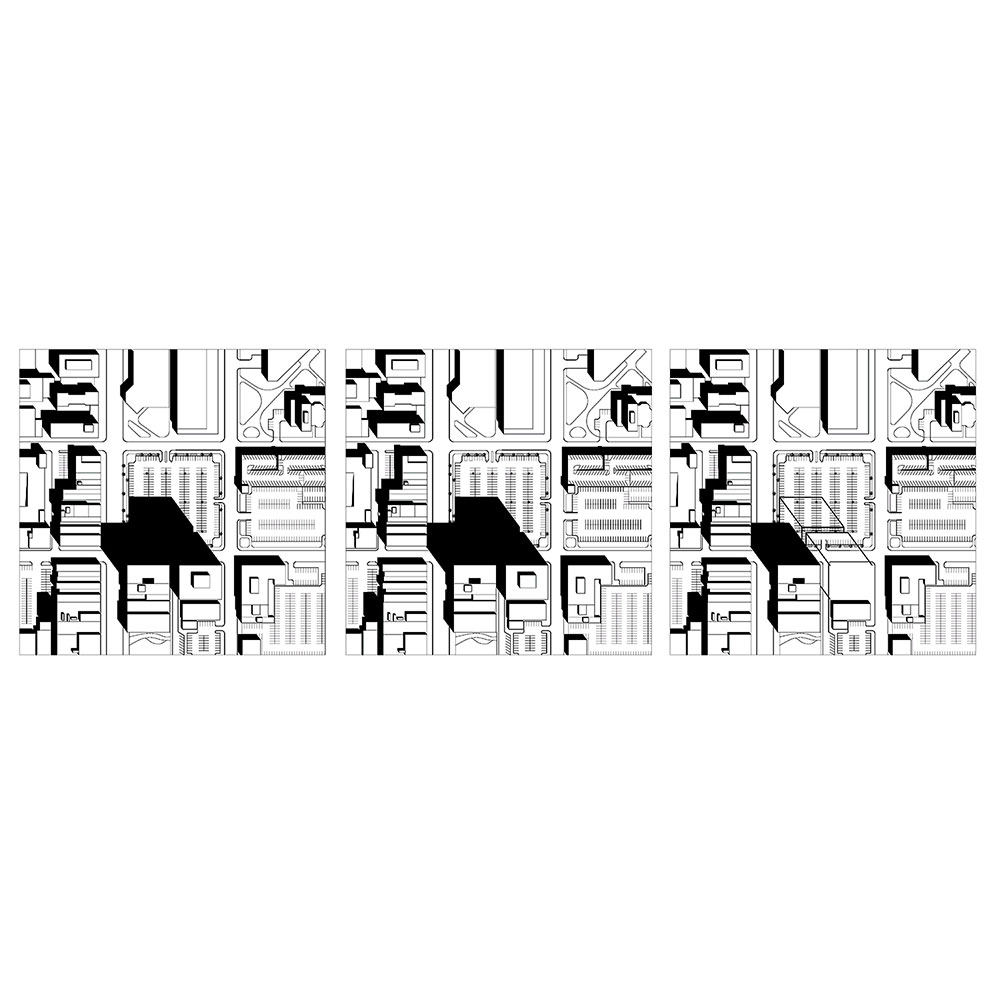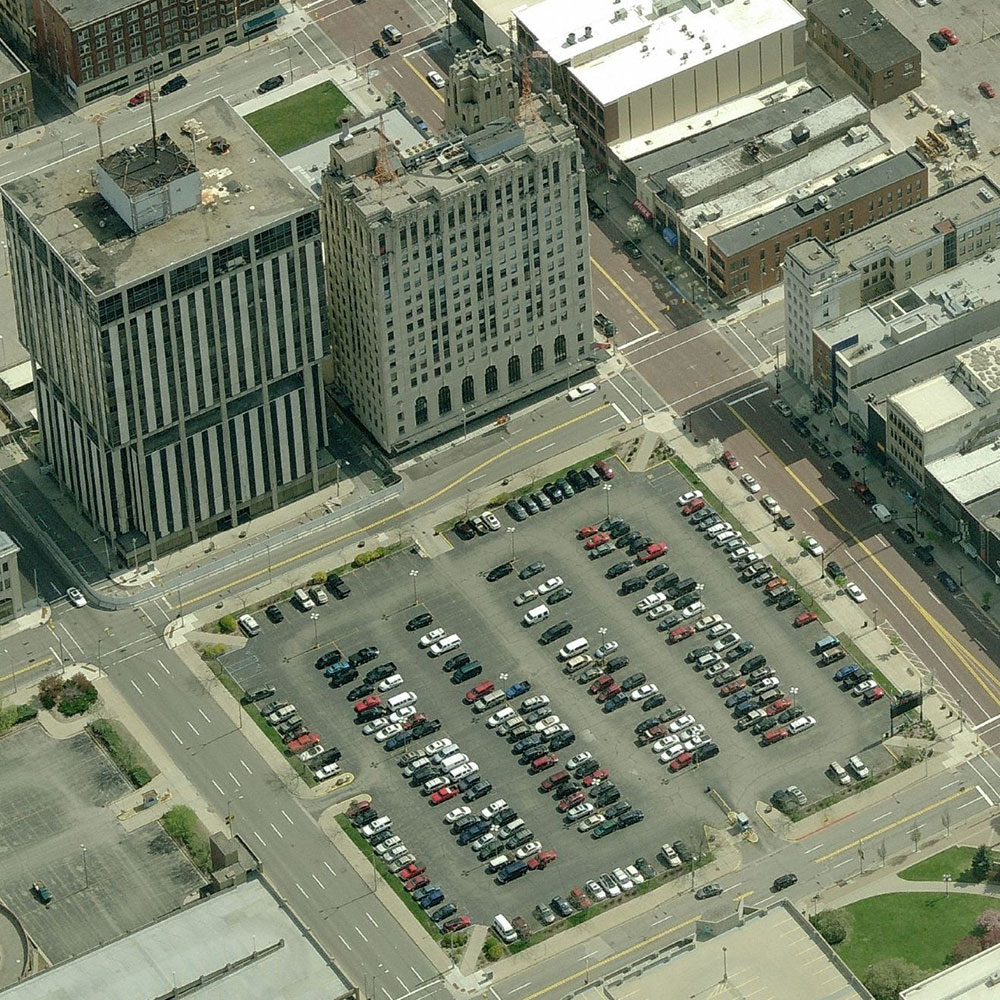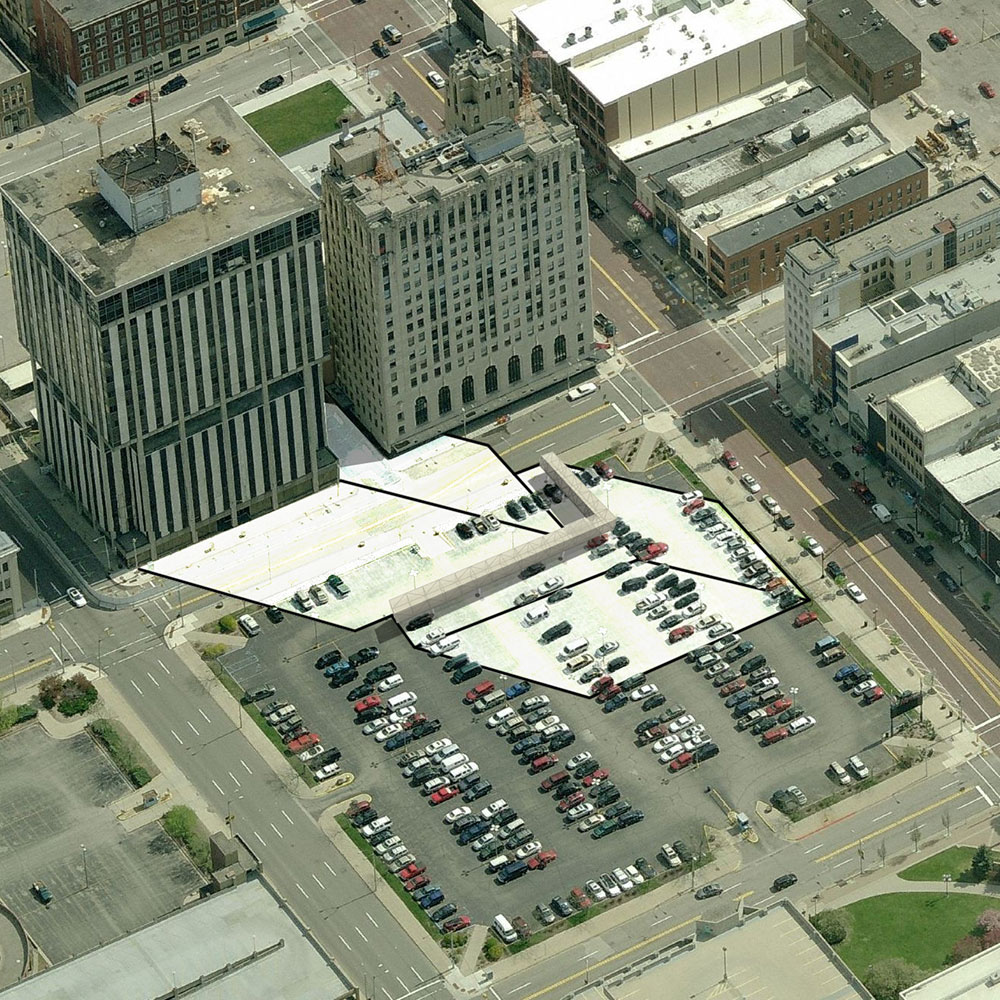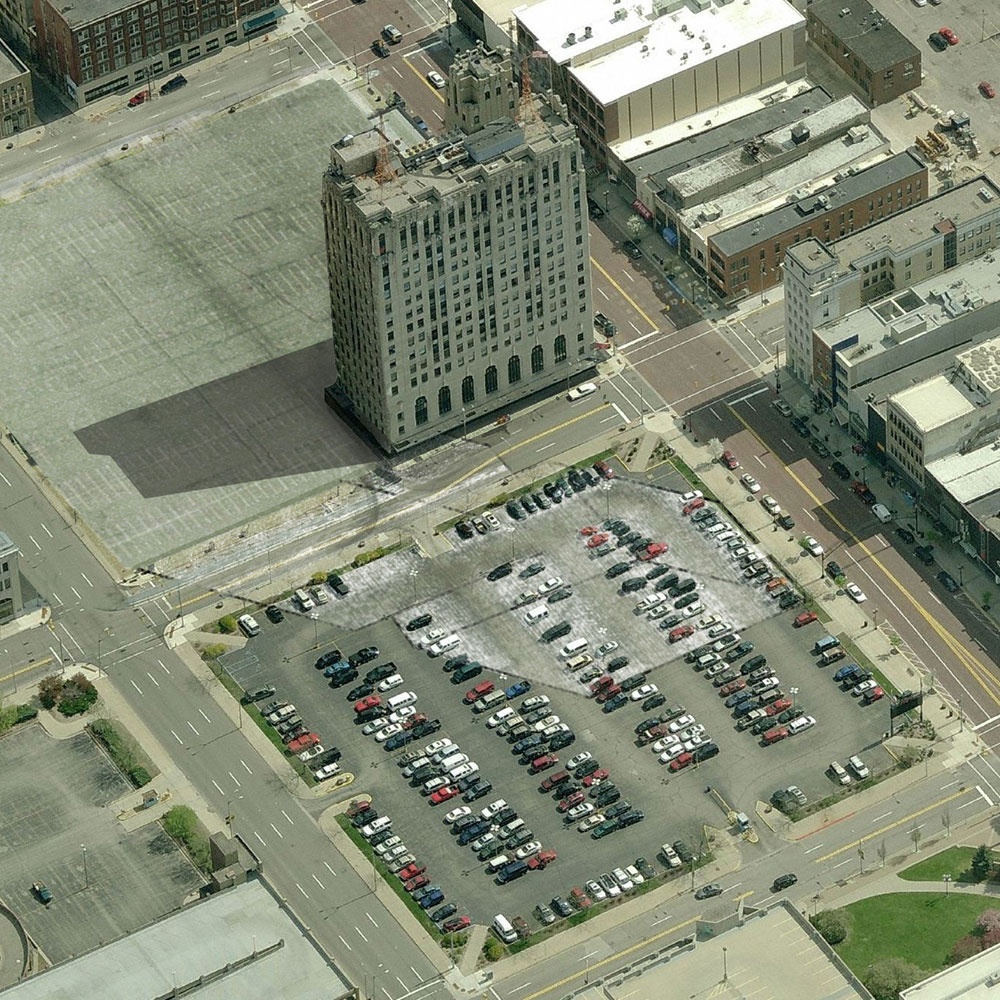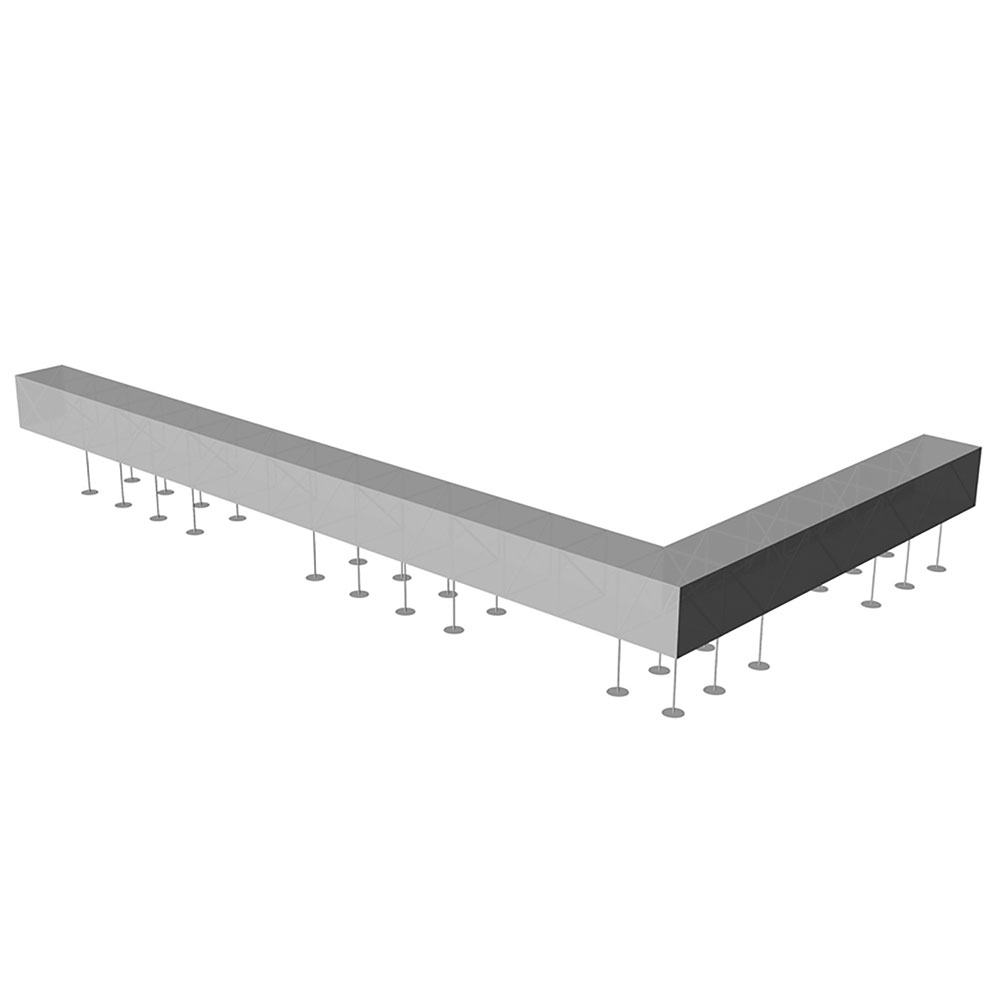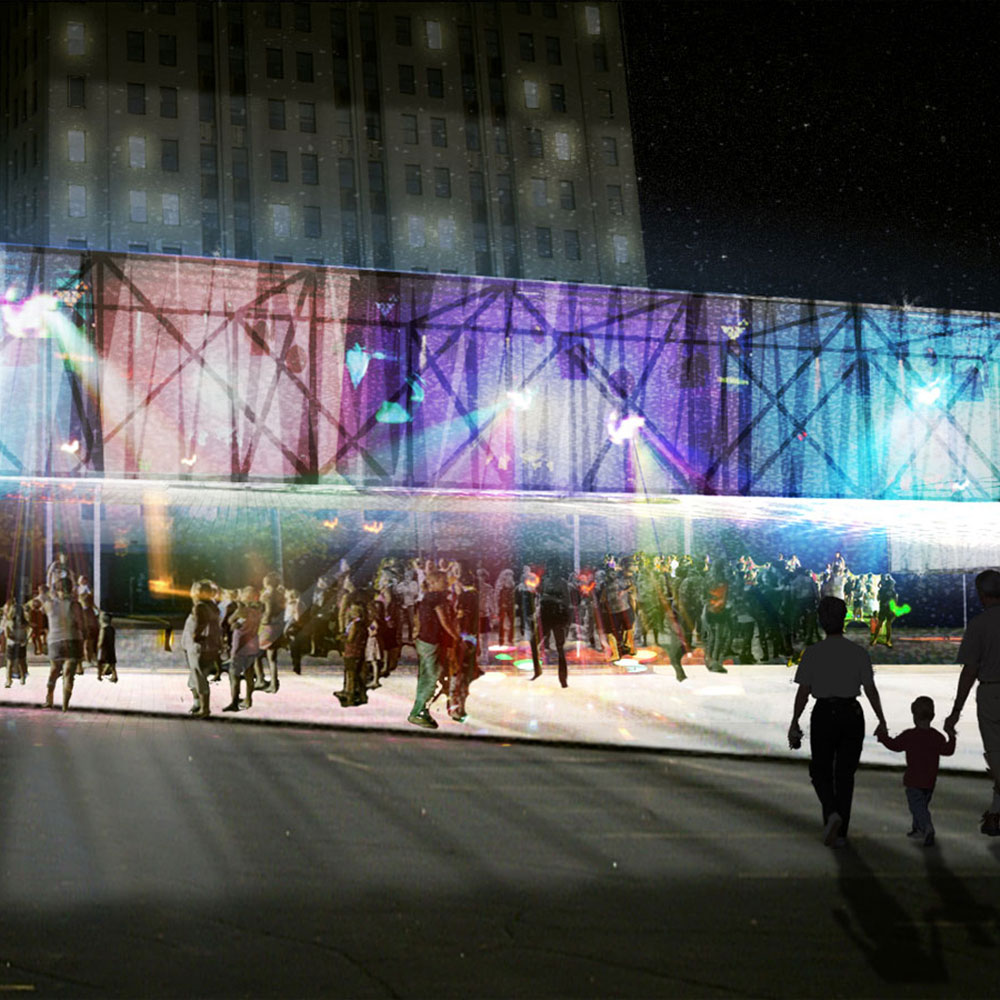Shadow is a proposal designed in response to the slated demolition of the Genesee Towers – Flint, Michigan’s tallest building and a marker of the city’s progress – which was under consideration to be replaced by a plaza. A sobering sign that the heyday of Flint is long past, and “ugly” or not, the Towers’ demolition serves as a visible atrophy, a vote of no optimism for the city.
The adjacent parking lot is an opportunity to test fit the symbolic loss of the building by “erasing” the zone that used to be the building’s shadow, using light and white road paint. As the trademark of the building, its singular open floor is inverted as the only lit mass built within its corresponding space against the new white “shadow.”
We chose white road paint, which was invented in 1911 in Michigan, as the primary means of inverting the shadow. An array of landscape strategies transforms the planted areas into a white environment, as well. The lit mass, lifted above the parking surface, becomes a magnet for activities, performing as shelter, lighting, and signage or advertisement. Lastly, the white shadow demarcates a space for myriad events, simultaneously serving as a reflection on the loss of the Towers.
If the building were saved, the shadow would become a marker of this moment of crisis; if demolished, the shadow becomes a temporary trace of the past. Either way, as time passes, the white shadow wears away.
Client: Flint Public Art Project
Program: Cultural, Public Art, Pavilion
Status: Complete
Size: 2,280 SF
Location: Flint, MI
Team:
Architect: Architect: KM,A (Kyle May and Alan Lucey) and Sean Burkholder
Images: KM,A, Sean Burkholder
